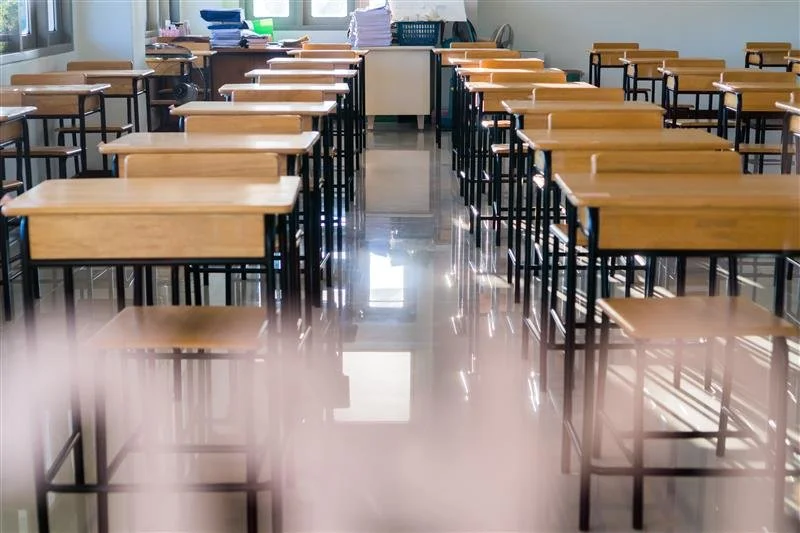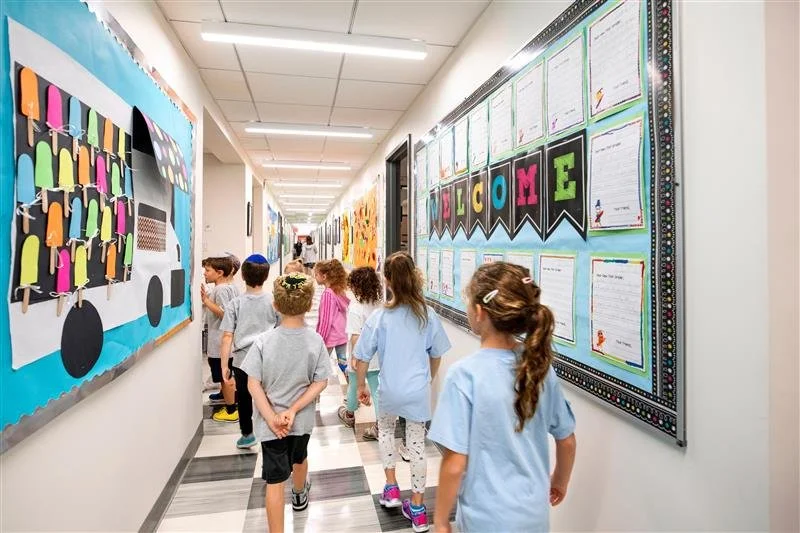The Hidden Crisis: Addressing Children Missing Education
Education is a fundamental right, yet thousands of children across the UK remain at risk of falling through the cracks due to circumstances that render them "Children Missing in Education" (CME). As outlined by the Department for Education (DfE), CME refers to children of compulsory school age who are neither registered in a school nor receiving suitable education elsewhere. These children are at heightened risk of harm, exploitation, underachievement, and becoming NEET (Not in Education, Employment, or Training).
At Deesha, we believe that no child should be left behind. Our commitment to leveraging technology to address educational inequalities aligns closely with the goals of ensuring every child receives suitable education. Through innovative solutions, we aim to support schools, local authorities, and communities in addressing the CME challenge.
The Challenges: Why Do Children Go Missing in Education?
Children missing from education is a pressing issue with multifaceted challenges. These children, who are of compulsory school age but not enrolled in school or receiving suitable alternative education, face significant risks of falling behind academically and socially. Understanding the causes of CME is the first step toward creating effective strategies to address this issue.
Key Reasons Why Children Go Missing in Education:
Frequent Relocations
Families of migrant workers, refugees, Gypsy, Roma, and Traveller (GRT) communities, or service personnel often move frequently, either within the UK or internationally. These transitions can disrupt children’s educational continuity, especially when school records and histories are not transferred promptly. For GRT families in particular, the transition from primary to secondary school is a critical juncture where many disengage from education due to cultural, logistical, or systemic challenges. Similarly, service personnel families may face delays in accessing local schools due to limited spaces or administrative barriers.Elective Home Education Without Structure
Some parents withdraw their children from school to provide home education but fail to establish a structured or adequate curriculum. While many families choose home education for valid and well-prepared reasons, others may lack the resources, skills, or understanding to provide suitable education. This gap often leaves children unmonitored and potentially at risk of falling through the cracks, especially if the local authority is not informed promptly.Attendance Issues Linked to Safeguarding Risks
Poor attendance or prolonged absences can sometimes indicate underlying safeguarding concerns, such as neglect, abuse, or exploitation. These children are among the most vulnerable, and their absence from school further isolates them from protective structures. Schools and local authorities need robust systems to identify and investigate attendance issues quickly, ensuring appropriate referrals to social care where necessary.Disengagement Due to Social and Economic Barriers
Children from underserved communities, such as those in social housing or economically deprived areas, often face significant obstacles to educational engagement. Lack of access to resources like technology, stable housing, or even proper nutrition can create barriers to consistent attendance. For families in crisis, education may not always be prioritised, putting children at risk of becoming CME.
Struggling to understand the root causes of attendance issues in your school? Deesha provides the data-driven insights you need to identify trends, correlate attendance with contributing factors, and implement effective strategies. Book a demo to learn more.
Barriers to Consistent Attendance:
Lack of Access to Technology: In today’s increasingly digital learning environments, access to devices and reliable internet is essential. However, many children from underserved communities lack these resources, limiting their ability to engage with schoolwork, complete assignments, or participate in online learning during disruptions like illness or school closures. This "digital divide" exacerbates educational disparities and widens the gap in learning outcomes.
Unstable Housing: Families in social housing or experiencing homelessness often face frequent relocations, which disrupt children’s continuity in education. Changing schools repeatedly can lead to gaps in enrollment, loss of academic records, and difficulty forming stable peer and teacher relationships. This instability can make it challenging for children to integrate into new educational settings effectively.
Basic Needs Not Being Met: Poor nutrition, inadequate clothing, and lack of transportation to school are common challenges for families in economically deprived areas. When families struggle to afford basic necessities, children may miss school due to hunger, inadequate winter clothing, or an inability to cover bus fares or other transportation costs. This creates physical and emotional hurdles that hinder their ability to focus on education.
Parental Struggles: In these communities, parents may be dealing with employment instability, mental health challenges, or language barriers, which can reduce their ability to engage with their child’s education. Families in crisis often focus on immediate survival needs, deprioritizing consistent school attendance or educational oversight. Without adequate support, these children are at greater risk of slipping through the cracks.
Social and Emotional Impacts: Children growing up in these environments often experience higher levels of stress and anxiety. Factors such as exposure to community violence, household instability, or discrimination can result in emotional disengagement from education, lower academic performance, and eventual withdrawal from the school system altogether.
5. Children of New Migrants or Refugees
Families who are new to an area or country may struggle to navigate the education system, particularly if there are language barriers or cultural differences. These children may remain unknown to local authorities, leading to delays in enrollment and access to services.
6. Exclusions and Special Educational Needs (SEN)
Pupils with challenging behaviors or special educational needs (SEN) are disproportionately at risk of exclusion from mainstream education. Exclusion, whether fixed-term or permanent, disrupts learning continuity and can have lasting consequences on a child’s academic progress, emotional well-being, and future opportunities. Without appropriate intervention or alternative educational provision, these children often face significant challenges in reintegrating into the education system, placing them at risk of becoming “Children Missing Education” (CME).
Heightened Risks for Pupils with SEN
Many children with SEN struggle to adapt to standard classroom environments due to behavioral difficulties arising from conditions such as ADHD, autism, or emotional and social disorders. These behaviors, often misinterpreted as defiance or disruption, can lead to repeated suspensions or permanent exclusions.
Exclusions frequently stem from insufficient early intervention or lack of tailored support for these students. When schools lack the resources or expertise to manage challenging behaviors effectively, exclusion can become a default response rather than the last resort.
Being excluded often reinforces feelings of isolation and failure in students with SEN. A lack of structured education following exclusion risks further disengagement, creating a pathway to poor educational outcomes and long-term disadvantages.
Do you need a more holistic view of your students to provide effective support? Deesha can help you combine demographic, parental, and academic data into comprehensive student profiles. Book a free demo to explore our solutions.
Under current legislation, schools and local authorities are required to arrange full-time education for pupils who are permanently excluded, starting from the sixth school day after the exclusion. This obligation includes the provision of suitable alternative education, which should meet the pupil’s needs and support their reintegration into mainstream education or another appropriate setting. Despite this statutory framework, gaps often exist:
Delayed Action: There are cases where suitable alternative provisions are not identified or arranged within the stipulated timeframe, leaving students without access to education for extended periods.
Lack of Personalisation: Alternative provisions often do not fully address the specific needs of SEN pupils, which can hinder their ability to re-engage effectively with education.
Reintegration Barriers: Schools may lack clear plans or resources to facilitate the reintegration of excluded students, especially those with SEN, further marginalizing these children.
The Broader Implications of CME
Children missing from education face long-term consequences that go beyond the classroom. They are more likely to:
Underachieve academically, limiting future career prospects.
Become NEET (Not in Education, Employment, or Training), contributing to cycles of poverty and social exclusion.
Fall victim to harm, exploitation, radicalisation, or involvement in crime due to lack of oversight and support.
Experience mental health challenges due to isolation and instability.
Addressing the CME Crisis
We need to move beyond reactive measures and create a system that actively identifies and supports at-risk children before they fall through the cracks. Key strategies include:
Real-Time Data Sharing and Integration: Fragmented data silos are a major obstacle in addressing CME. Centralised, integrated platforms that allow schools, local authorities, and other relevant agencies (like social services and healthcare providers) to share information securely and in real-time are crucial. This enables immediate access to up-to-date attendance records, transition data, safeguarding concerns, and other vital information, fostering a holistic view of each child's situation. Imagine a system where a change of address automatically triggers an alert to the relevant school and local authority, preventing delays in enrollment.
Strengthened Communication Networks: Open and consistent communication between schools, parents/guardians, and local authorities is essential. Regular dialogue ensures accurate record-keeping, facilitates timely interventions, and builds trust between stakeholders. This includes not just formal channels but also proactive outreach to families who may be facing challenges, offering support and guidance. For example, automated messaging systems can alert parents to unexplained absences, prompting early intervention.
Predictive Analytics for Early Intervention: Advanced technology, such as predictive analytics, can play a transformative role. By analyzing patterns of disengagement, irregular attendance, non-standard transitions, and other risk factors, these tools can flag children at risk of becoming CME before they disappear from the system. This allows for proactive intervention, offering tailored support and preventing further disengagement. For instance, if a child's attendance suddenly drops after a family move, the system can trigger an alert, prompting a welfare check.
Empowering Communities and Providing Tailored Support: Addressing the root causes of CME requires engaging directly with underserved communities and providing tailored support to families facing complex challenges. This includes addressing issues such as poverty, unstable housing, language barriers, and mental health concerns. By working closely with community organizations and providing access to resources and support services, we can create a more inclusive and supportive environment for all children. This might involve providing access to technology, after-school programs, or family support services.
Deesha: A Powerful Ally in Preventing Children Missing Education
Deesha goes beyond traditional school management solutions to tackle the complex issue of CME. Deesha gives local governments and schools the ability to proactively identify children at risk and take early action by utilising its extensive data insights:
Spot Early Warning Signs: Deesha's advanced analytics can identify patterns in student information, attendance records, and performance data that might signal potential risks for CME. This could include sudden drops in attendance, declining academic performance, or changes in demographics that suggest mobility or instability. By surfacing these patterns, Deesha allows schools to focus on at-risk students before they slip through the cracks.
Targeted Support for Vulnerable Groups: Deesha's data insights can identify children belonging to high-risk groups for CME, such as those in Gypsy, Roma, and Traveller communities, children of armed forces personnel, or students with Special Educational Needs (SEN). By recognizing these groups, schools can proactively reach out and offer tailored support to address their specific needs and reduce the risk of disengagement and eventual CME.
Real-Time Monitoring for Safety and Wellbeing: Deesha's health and safety modules can assist schools in monitoring attendance and identifying potential safeguarding concerns. This allows for early intervention when children are at risk of neglect or abuse, factors that can contribute to CME.
Data-Driven Decisions for Resource Allocation: Deesha's centralised platform provides a holistic view of student information. This includes attendance trends, student demographics, and learning data. With this comprehensive picture, schools can make informed decisions on resource allocation, ensuring that students most at risk of CME receive the necessary support.
Deesha, with its suite of data-driven insights, empowers schools to identify at-risk children, streamline communication, offer targeted support, and ensure a safe and supportive learning environment. This preventive strategy is pivotal in preventing CME and ensuring that all children have the opportunity to thrive in education.
Prevent CME with the power of data. Schedule a Deesha demo now.





